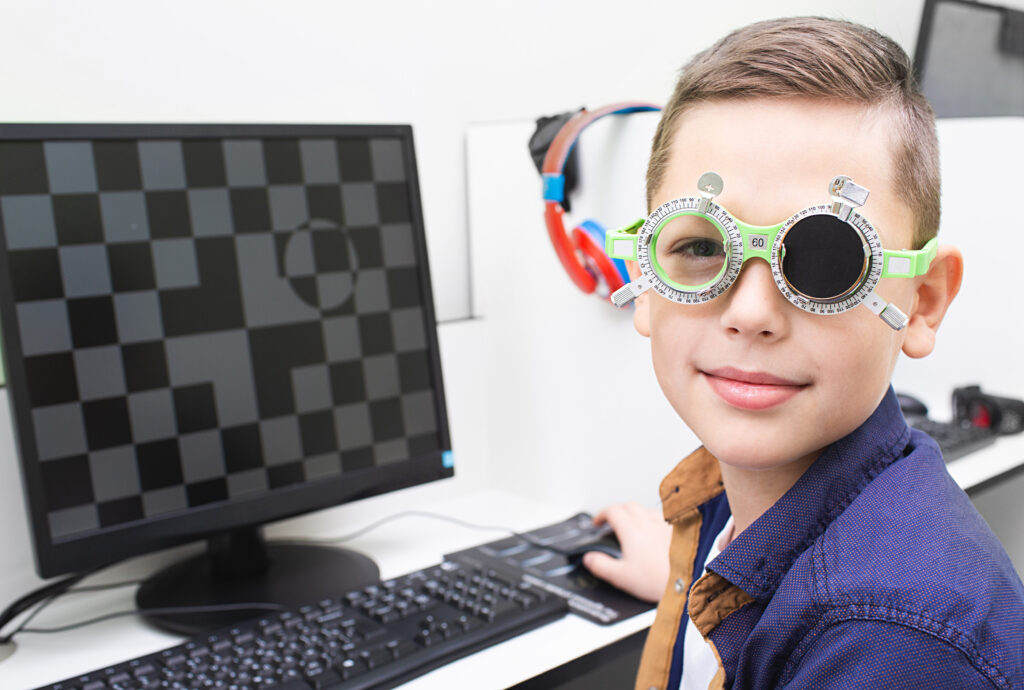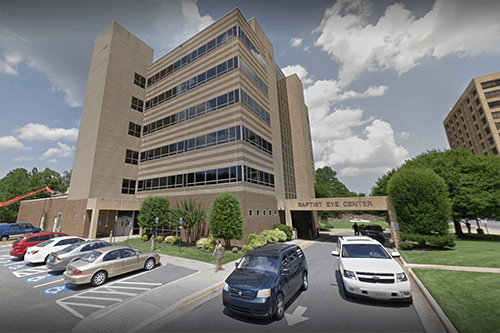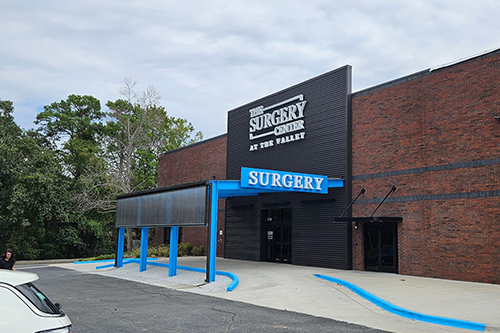When it comes to our health, we often prioritize the well-being of our heart, lungs, and overall physical fitness. However, there’s another aspect of our health that sometimes goes unnoticed: our vision. Amblyopia, commonly known as “lazy eye,” is one of those eye conditions that many people may not be familiar with but understanding it and its importance is crucial. In this blog post, we will delve into what amblyopia is, why it matters, and how it can impact both children and adults.

Understanding Amblyopia:
Amblyopia is a visual disorder that occurs when the brain and the eye do not work together properly. This condition typically begins in early childhood and is often referred to as “lazy eye” because one eye is weaker than the other. While the term may sound benign, the consequences of amblyopia can be significant if left untreated.
The condition arises due to several factors, including:
- Strabismus: Strabismus is a misalignment of the eyes, where one eye may turn inwards, outwards, upwards, or downwards. When this occurs, the brain tends to favor the use of one eye over the other, leading to amblyopia in the weaker eye.
- Refractive Errors: Unequal refractive errors between the eyes, such as a significant difference in nearsightedness, farsightedness, or astigmatism, can also lead to amblyopia. The brain may suppress the vision in the eye with the stronger prescription, causing it to become lazy.
- Childhood Eye Diseases or Injuries: Certain eye diseases or injuries during childhood can disrupt normal visual development, resulting in amblyopia.
Why Should You Care About Amblyopia?
- Vision is Vital: Vision is one of our most precious senses, allowing us to experience the world around us. For children, developing healthy vision is essential for academic success, sports participation, and overall well-being. In adults, maintaining good vision is crucial for daily tasks, work, and maintaining independence.
- Early Intervention is Key: Amblyopia is most treatable during childhood, primarily before the age of seven. After this critical period, it becomes increasingly challenging to correct the condition. If amblyopia is left untreated, it can lead to permanent vision impairment in the affected eye.
- Impacts on Depth Perception: Amblyopia can affect depth perception, making tasks like judging distances, catching objects, or driving more challenging. This can impact safety and quality of life.
- Emotional and Psychological Effects: Amblyopia can lead to self-esteem and self-image issues, particularly in children who may feel self-conscious about their appearance when their amblyopia is related to misalignment of their eyes or it affects their ability to participate in certain activities.
- Economic Costs: On a larger scale, untreated amblyopia can result in higher healthcare costs and decreased productivity in adults due to vision-related limitations.
How is Amblyopia Diagnosed and Treated?
Amblyopia is typically diagnosed through a comprehensive eye examination, which may include visual acuity testing, eye alignment assessment, and refraction to determine the need for glasses. Early diagnosis is essential for effective treatment.
Treatment for amblyopia may involve:
- Prescription Glasses: If refractive errors are contributing to the condition, prescription glasses may be prescribed to correct the vision imbalance.
- Eye Patching: Occlusion therapy, or eye patching, involves covering the stronger eye to force the brain to use the weaker eye. This helps improve visual acuity in the amblyopic eye.
- Atropine Drops: In some cases, atropine drops can be used to blur the vision in the stronger eye temporarily, encouraging the use of the weaker eye.
- Vision Therapy: Vision therapy exercises and activities may be recommended to improve eye coordination and visual skills.
- Surgery: In cases of severe strabismus, surgery may be required to align the eyes properly. It is important to note that surgery aims to correct the eye misalignment, which can secondarily help to improve the amblyopia with continued patching or atropine therapy.
Prevention and Awareness:
Preventing amblyopia starts with awareness and early detection. Regular eye exams for children are essential, as early intervention can significantly increase the chances of successful treatment. For adults, it’s important to be aware of any changes in your vision and seek prompt eye care if you notice any issues.
At our Baptist Drive location, you can now schedule appointments with Dr. Brita Rook, a Pediatric Ophthalmologist and Adult Strabismus specialist. Her expertise in these fields makes her an invaluable resource for individuals seeking care for vision issues, especially those with amblyopia.
By recognizing the importance of early diagnosis and treatment, we can help individuals with amblyopia lead fulfilling lives with clear and healthy vision. So, whether for yourself or your loved ones, caring about amblyopia is caring about the gift of sight and the well-being of those around us.






